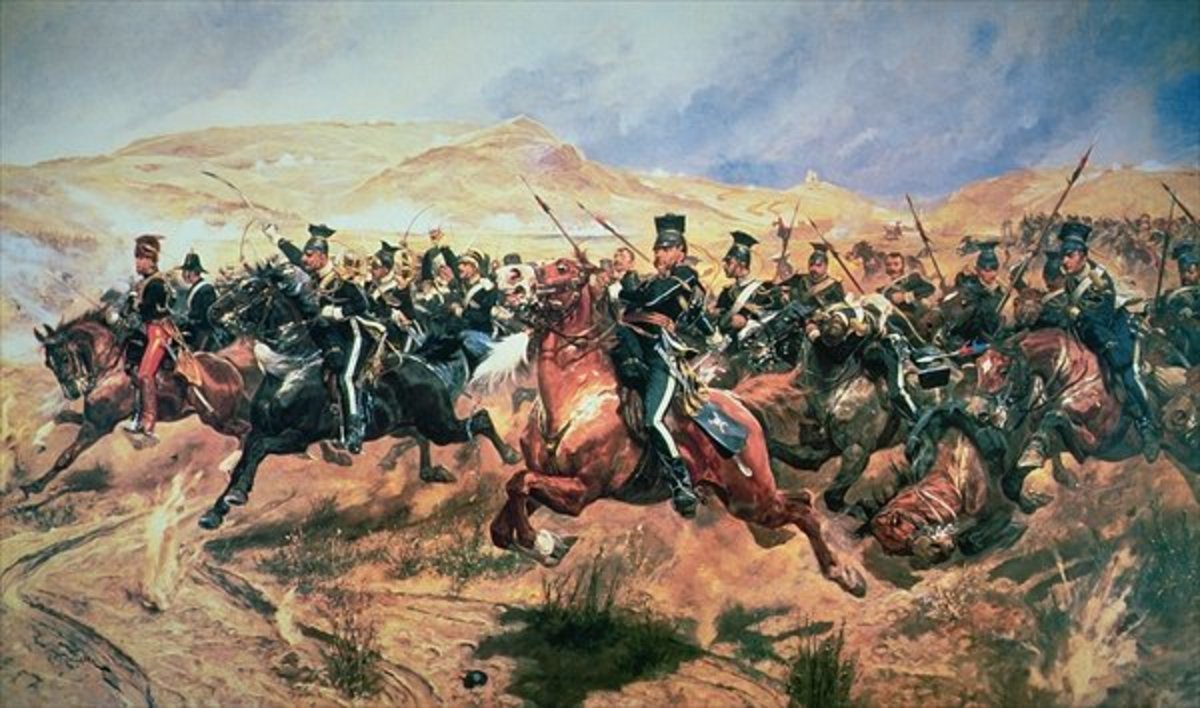The Rime of the Ancient Mariner
A Literary Analysis
I originally wrote this in 2007 while earning my associate's degree. It was my last homework assignment for English Composition II. Of all the papers that I wrote during my two years of school, this one was my favorite to write because of my love for poetry and, more specifically, this poem. In this version of my essay, I have made minor updates.
Abstract
Samuel Taylor Coleridge (1772-1834) first published “The Rime of the Ancyent Marinere” in 1798 in a collection called Lyrical Ballads. This collection was a combined effort of Coleridge and his good friend, William Wordsworth. (Richards, 1950; Gardner, 1965) After being altered and re-published many times, the final version, as “The Rime of the Ancient Mariner”, was published in 1834 in Coleridge’s Poetical Works. (Gardner, 1965) In 1984, Steve Harris, the bass guitar player for the heavy-metal band Iron Maiden, re-worked the words and set them to music. The Exxon Valdez dumped 11 million gallons of crude oil into Prince William Sound off the coast of Alaska in 1989. (U.S. Environmental Protection Agency [EPA], 2006) This essay will provide an analysis of the epic poem and take a "compare and contrast" look at Iron Maiden’s song version along with the effects of the oil spill.
“Hear the rime of the Ancient Mariner/See his eye as he stops one of three/Mesmerizes one of the wedding guests/Stay here and listen to the nightmares of the Sea” – "Rime of the Ancient Mariner” by Iron Maiden (1984)
A person could accurately assume that Samuel Taylor Coleridge never foresaw the impact that his poem, “The Rime of the Ancient Mariner”, would have in creating new phrases, new takes on his tale set to music or how the lessons in his poem would be ignored after a major mishap in the latter parts of the 20th century. “The Rime of the Ancient Mariner” is an epic poem with 625 lines separated into seven parts and spins a yarn that teaches that man should cherish all things that God made. The poem tells a story of how an old and weary sailing-vessel master stops a wedding guest and relates the frightful memory of a voyage long ago. Reluctantly, the wedding guest sits and listens to the tale.
During the voyage, the ship and its crew are followed by an albatross, a very large sea-faring bird. Not knowing if the bird is a sign of good or bad luck, the mariner kills the bird. At first, the crew, believing the bird is good luck, admonishes their captain for killing it, but when their bad weather clears, the crew vindicates the captain’s actions.
In doing so, they have cursed themselves. The curse starts with a lack of winds, a lack of rain and a lack of drinking water. The ship is not moving. The ship’s boards are shrinking and warping, and their thirst has become unbearable. To punish the captain for his crime, the crew hangs the albatross from the captain’s neck. About to lose all hope, they see another vessel on the horizon. As the vessel approaches, the captain sees only two figures on the ship. He sees that one is “Death”, with its black shroud and ghastly frame. The other is a fair looking woman that is named “Life-in-Death”, and the two appear to be playing a game with dice. They are playing for the lives of the captain and crew.
The captain surmises that Death has won the crew, but Life-in-Death rejoices in winning the captain. As the two take their winnings, the 200 men of the crew fall dead one by one. After the souls of the men had fled their bodies, their eyes stayed open wide, staring at their captain. The mariner, alone, wishes for his death, but he lives, along with the denizens of the sea. During the night, he prays for and blesses all of these seaward creatures. Then, the albatross falls from his neck and sinks into the sea. Afterwards, the captain sleeps.
When the captain wakes, it starts to rain, and the bodies of the crew groan and rise. These bodies, being possessed by good and blessed spirits, operate the ship back to the mariner’s homeland. When in sight of the homeland, the spirits lift, and a small pilot’s boat with three men approaches, and the mariner’s ship sinks in a whirlpool. Having been saved by these three men, one of them, a hermit, listens to the mariner confess his sins of the voyage, and the hermit absolves the mariner. The mariner is bound by Life-in-Death to tell his tale in order that others will learn from his transgressions against God’s creations. The poem ends with the wedding guest waking the next morning “a sadder and wiser man”.
The poem does shift back and forth between the ship’s voyage and the dialogue shared by the ancient mariner and the wedding guest. The wedding guest continually vocalizes his fear of the sailor and the occurrences of the tale, but the mariner repeatedly calms him and continues.
The poem is also hard to read at times. This is because the stanzas are not consistent in length or meter. The rhyming scheme is basic though. If one takes time and shows patience, the message of the poem can be entertaining and understood.
A wonderful paraphrasing of the poem is in the form of a song. In 1984, the heavy-metal band Iron Maiden released a thirteen minute and thirty-four second recording called “Rime of the Ancient Mariner” on their album Powerslave. The song has as many words as the poem has lines. Therefore, it is easier to read. In fact, there are two parts of the song that directly quote Samuel Taylor Coleridge’s 1834 version of the poem. The first part is sung with the rhythm of the music, and the second is spoken as a narrative during a slow (or half-time speed) interlude. No video was made for this song. The only visuals are taped concert performances. Iron Maiden’s version is definitely a primer for any novice interested in studying the poem.
Webster’s New World College Dictionary (2002) also credits the second definition of “albatross” to Samuel Taylor Coleridge. “Burden or source of distress” is listed as part of the definition with an example of “an albatross around one’s neck”. This phrase and definition, along with Iron Maiden’s song, are examples of how this poem has made an influence on our lives for over 214 years. That should be enough to rank it among Mozart’s concertos or Shakespeare’s tragedies. Sadly, it is not.
In 1989, sea-faring men desecrated God’s coastal and ocean creations. While transporting 53 million gallons of crude oil from Alaska to the contiguous United States, the Exxon Valdez struck the Bligh Reef in the Prince William Sound. From a hole torn into the hull, the ship dumped approximately 11 million gallons of oil into the sound. (EPA, 2006) The effects of this mishap killed hundreds of thousands of wildlife animals including birds, whales, otters, fish and more. Additionally, the coastline was lined with a layer of oil. (Wikipedia, 2007)
The National Transportation Safety Board, or NTSB, found in its investigation of the mishap that two officers aboard the Exxon Valdez were at fault due to fatigue and intoxication. The NTSB also found that the Exxon Shipping Company and U.S. Coast Guard also failed in their duties. Additionally, the report concluded that there were insufficient pilot and escort services. (Wikipedia, 2007)
Despite spending over two billion dollars to assist in the clean-up effort, Exxon was ordered by a court judgment to pay $2.5 billion in punitive damages. In May 2007, the Ninth U.S. Circuit Court of Appeals denied Exxon’s latest motion of appeal. This forced Exxon to take their case to the U.S. Supreme Court, which vacated the $2.5 billion damages and sent it back to the lower court. It was decided that Exxon pay $507.5 million. (Wikipedia, 2012)
The influence of the story is strong enough to coin phrases and create other pieces of art. It is a shame that this wonderful tale has not yet made it onto film. A movie version would help drive the lesson into man’s collective soul, because apparently, we, as a human race, have not learned to cherish and take care of our surroundings as we would our private homes and lives.
References
1. Albatross (2). (2002). Webster’s New World College Dictionary – Fourth Edition. (p. 32) New York: Wiley Publishing, Inc.
2. Exxon Valdez oil spill. (2007). Retrieved June 25, 2007 from http://en.wikipedia.org/wiki/Exxon_Valdez_oil_spill
2. Exxon Valdez oil spill. (2012). Retrieved September 7, 2012, from http://en.wikipedia.org/wiki/Exxon_Valdez_oil_spill
3. Gardner, M. (1965). The annotated ancient mariner. New York: Clarkson N. Potter, Inc.
4. Iron Maiden. (Performers). (1984). Powerslave [CD]. Los Angeles: Capitol Records
5. Richards, I. (1950). The portable coleridge. New York: Penguin Books
6. U.S. Environmental Protection Agency. (2006, March 9). Exxon valdez. Retrieved June 25, 2007, from http://www.epa.gov/oilspill/exxon.htm
My grade for this paper was a perfect 60 out of 60. Here are my professor's comments on my paper as well.
"Chuck, The Rime of the Ancient Mariner is one of my favorites! I thought that you did a good job of contextualizing your subject matter, and I was interested by this interpretation. It’s been a pleasure having you in the class. Well done and good luck for the future!
Thanks,
Elizabeth"
Reading the Poem
Have you read "The Rime of the Ancient Mariner" by Samuel Taylor Coleridge?
© 2012 Charles Dawson







